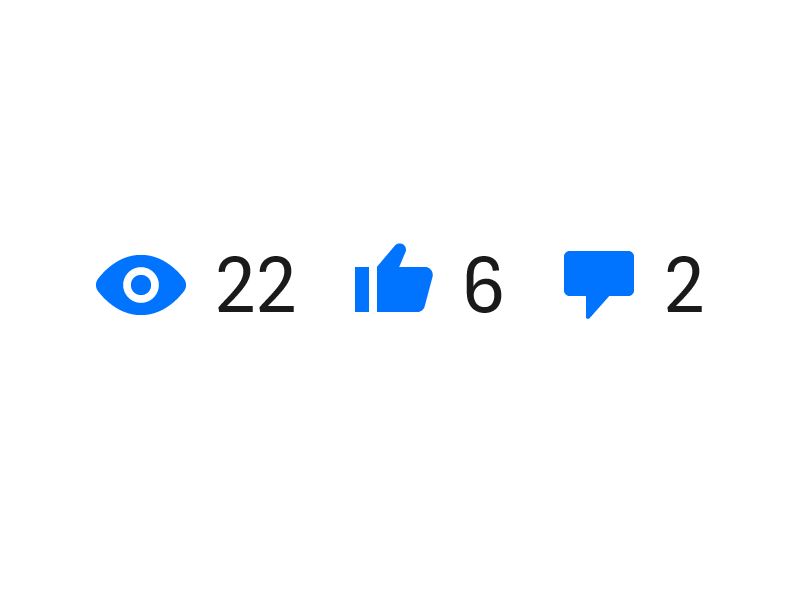The estimated reading time for this post is 12 Minutes
Introduction
The functioning of any business does not take place in a vacuum and is determined by the influence of various forces, which can be determined by the direction of action, the quality of influences, and strength. Understanding the global business environment requires an understanding of the whole set of processes at the global national and local levels that affect the market, consumer preferences, and ways of doing business. Interestingly, these business processes have additional temporal and spatial dimensions, they show persistence over time and differ depending on geographical and regional conditions (w2).
We will write a custom essay on your topic a custom Essay on The Uniqlo Firm Navigating Unique Challenges
In terms of intellectual interpretations, business processes have theoretical, analytical, and narrative dimensions. This means that for strategic forecasting and analysis, experts use theoretical concepts and strategic planning tools developed by economists during the last century. Equally important, analytical assessment includes understanding business processes using statistical data, measures, and relationships (w1). Finally, the narrative component includes stories, such as brand success stories, case scenarios, and the latest news regarding strategic business decisions. These stories can be divided into episodes and focus on certain responsible personalities – prime stakeholders (w1). Equally important, in terms of analytical assessment of businesses, experts use the prisms of global industrial, socioeconomic, cultural, and political environments. This report aims to analyze the position of the Uniqlo company in the market in terms of the impacts described above.
Fast Fashion Industry in Japan
The fast fashion industry in the world differs depending on the region, with distinct features for each geographical sector. The US and China are the two closest competitors of Japanese fast fashion companies on the international level. Importantly, in the US the apparel market is characterized by the focus on mass-market products with the overwhelming dominance of up to 10-15 brands and fierce competition. However, due to the higher similarity between the brands, and the longstanding leaders in target-consumer sectors, the probability of entrance of new firms is very low which creates closedness and stagnation. The US market in all ways impacted the Chinese fast fashion that is mainly focused on online trade and consumers with lower purchasing power.
The Japanese fast fashion industry differs favorably from the US and China due to the higher standard of living and more sophisticated consumer tastes. Although recent stresses of COVID-19 and Russian aggression hurt businesses around the world, the Japanese fast fashion industry coped with the lockdown and trade challenges. Even more importantly, Japanese fast fashion brand Uniqlo – a subsidiary of Fast Retailing Co. entered the US market, competing for the niche market share with the Western brands (Matsuyama, 2022). Importantly, the US and European markets show a greater gap between the mass market, middle market, and elite segments than the Japanese fashion, which can be seen as a potential competitive advantage.
Porter’s Five Forces analysis is a handy tool for determining the critical competitive forces and distribution of power in the industry. This tool of strategic marketing requires the analysis of competition in the industry, the potential of new entrants, the power of suppliers, the power of customers, and threats of substitutes (Porter’s 5 forces, 2022). The fast fashion market in Japan is highly saturated, and the competition in the industry is decently high, whereas the market is led by companies that follow the rules of fair competition and sell their goods both on national and international levels. The mass and middle market segments are presented by the fast fashion brands. There is also a segment of elite fashion presented by Chisato Tsumori, St8ting, Nicola Formichetti, Shinsuke Takizawa, and other renowned Japanese designers (Japanese fashion – history, trends, 2020). The elite segment has the potential to impact the fast fashion industry both as an international delegate of Japanese fashion, and the leader of tech innovation.
To illustrate the impact of competition in the industry, some statistics should be introduced. The recent data show that Uniqlo’s mother brand Fast Retailing became the market leader with a market value of 31.5 billion dollars (Fashion Statistics Japan, 2022). Fast Retailing experiences competition from Shimamura group (5 billion dollars market value), Asics Corporation (4.50 billion dollars), United Arrows (1.40 billion dollars), and Onward Holdings (1.13 billion dollars) (Fashion Statistics Japan, 2022). According to the data presented, Fast Retailing is a leader that maintains an insurmountable gap in market share between itself and other competitors.
There is a high potential for new entrants, despite the investments and hard efforts to conquer the market. Over the last decade, Japanese fast fashion brands became more popular than their US counterparts who previously showed dominance (Japanese fashion – history, trends, 2020). According to a recent survey, customers’ choices remain stable, with slight fluctuations in response to the marketing policies of companies that use eco-awareness and gender focus as tools to increase demand and improve their image (Sakamoto, 2018). The women-focused Fast Retailing subsidiary GU was among the top favorite brands, with leaders Earth and Music Ecology and Honeys appealing to the importance of ecological production (Sakamoto, 2018). Gap was the only American brand that maintained its position, while the LA-based Forever 21 plans to return to the Japanese market (Forever-21 to re-enter Japan, 2022). In other words, companies feel pressure from the new entrants, but this pressure is a positive sign, as it reflects the high potential of industry development and a shift in focus to local brands.
1 hour!
The minimum time our certified writers need to deliver a 100% original paper
The power of suppliers is another important element of the industrial environment, and for Japanese fast fashion, it is rather low. There is a large selection of materials to produce fabrics, mainly synthetic filament yarn, synthetic staple fibers, and artificial filament tow, the share of which is the largest on the market (Fashion Statistics Japan, 2022). The power of customers is rather low, and the companies change the pricing freely (Uniqlo to raise prices, 2022). The threat of substitutes is unlikely, although there is a growing interest in 3-D printed clothes, especially in the elite fashion niche (Japanese fashion – history, trends, 2020). Hence, the competition and potential of new entrants are the two main forces that shape the industry.
Uniqlo PEST Analysis
Political Environment
Uniqlo, which is the branch of a Fast Retailing apparel company, is a longstanding leader in the Japanese fast fashion industry. The brand benefits from favorable business conditions due to the stable political situation in Japan. The country gives the green light to all the measures of The Worldwide Governance Indicators, including voice and accountability, political stability and absence of violence, government effectiveness, regulatory quality, rule of law, and control of corruption (Morita et al., 2020; w5). Importantly, governmental participation in business is implemented through trade control laws, which do not create many barriers to international trade in terms of financial regulation.
The environmental issue remains the most painful, and governmental participation is mainly focused on the issues of eco-aware manufacturing. Open data show that the CO2 emissions of the Japanese fashion industry account for 4.5% of the global fashion industry emissions, while water consumption accounts for 9% of the world fashion industry indicators (Japan set to reduce, 2021). Importantly, given that the fashion industry is the second-largest source of environmental pollution in the world after the oil industry, the Japanese government developed rules and laws regulating production (Environmental and Climate Change Laws, 2022). These are the Basic Environment Law and Basic Environment Plan that regulate air pollution, water pollution, soil contamination, noise and vibration, the Air Pollution Control Act, and the Water Pollution Control Law.
Consumer attention to sustainable development practices is still growing and is one of the main drivers of brand trust, while brand quality and image are determinants of repeat purchases (Praja and Haryono, 2022; w5). Uniqlo is inferior to competitor brands Honeys Earth Music and Ecology in creating eco-initiatives (brands number 1 and 2 according to consumer preferences in 2017) (Sakamoto, 2018; Ziminski, 2021). As Japan’s largest clothing manufacturer, Uniqlo needs to implement more sustainable development practices.
Economic Environment
Importantly, the focus on the industry should be perceived in the framework of the environment-industry-firm-individual concept, where the environment forms the industry, in which the companies exist, survive, and bloom (w1). Economic factors that form the industry include factors of production, demand conditions, competition, and related and supporting industries (w3). Japan can boast a highly favorable economic environment with minimal government intervention and high purchasing power of consumers. Its GDP per capita is 36,400 dollars, one of the highest in the world (Fashion Statistics Japan, 2022). Japanese fashion manufacturing sector is growing, and the country imports clothes extensively (Japan set to reduce, 2021). This means that the industry is independent and can enjoy all the benefits brought by such independence.
Not so long ago, the fast fashion market was still influenced by US producers, which, in turn, were facing growing pressures from Chinese online trade. Today, Uniqlo continues to capture the North American market, despite the consequences of the COVID-19 pandemic (Matsuyama, 2022; Swift and Uranaka, 2022). The company is beating its own record set in 2019 with a full-year operating forecast of 2.1 billion dollars in 2022 (Matsuyama, 2022). At the same time, of the top Japanese fast fashion brands, only Gap is an American producer, while Honeys, Earth and Music Ecology, Shimamura, and GU are local Japanese companies (Sakamoto, 2018). Another American brand Forever 21 plans to re-enter the market and can create competition for Uniqlo which sells products of a similar style, being oriented on the US and specifically LA trends in fast fashion (Forever-21 to re-enter, 2022). To resist the influence of the mass market, and develop and preserve uniqueness, the Japanese fast fashion segment should revive its powerful staying that conquered the fashion industry in the 70s.
Sociocultural Environment
The sociocultural component of environmental impacts is critical as it works closely with the customers and their buying intentions. The culture consists of knowledge, accumulation, language, social conventions, social norms, values, rituals, and cooperation, and it spreads through communication (w4). No less importantly, cultures may have a very strong distinction of being more individualistic or collectivistic and vary in looseness and tightness of norms (w4). Japan has a unique culture and traditions, while the art of fashion reflects the values that Japanese culture promotes.
Remember! This is just a sample
You can get your custom paper by one of our expert writers
Interestingly, in the 1970s, Japan confidently entered the forefront of high fashion and had significant success at shows in London, Paris, and New York. Europeans were impressed by the original style, the tendency to experiment, the use of expensive fabrics, the use of volume, and the play of geometric lines. Therefore, Japanese elite fashion brands remain among the leaders in this field today. Fast fashion is significantly different from high fashion, but companies in this industry can take advantage of such unique Japanese trends as the attraction to technology and the wabi-sabi concept (Japanese fashion – history, trends, 2020). There is a strong culture of street fashion in Japan, mainly influenced by the Harajuku style that introduced the insanely vivid ‘kawaii’ outlooks. Interestingly, a recent study reports that Uniqlo successfully used the Anime/Manga for its UT collection which led to increased brand loyalty in Indonesia (Dwiputri and Apriliantry, 2022). No less importantly, Uniqlo cordially gets along with Gen-Z customers who strive for freedom of expression and brand disloyalty.
The discussed success implies that the introduction of anything that is not ‘mass market style’ will have a great demand among younger Japanese audiences. In this regard, Uniqlo can reconsider the preferences of Gen-Y and Gen-X audiences that may as well have a deprived desire to follow the trends and become more frenzy. In other words, Uniqlo needs to revive the concept of unique Japanese street fashion and can use almost any means to do it.
Technology Environment
Technology and innovation are becoming an increasingly important factor affecting the business of companies. Innovations are welcomed in all spheres, even fashion which may seem counterintuitive at some point. The recent Uniqlo’s HEATTEACH collection is clothing with heating elements, which is very convenient for autumn and winter weather (Uniqlo, 2022). Innovations can also be applied in logistics through the tracking of deliveries, personnel management, and the analysis of markets and statistical data.
The use of AI is an ongoing trend, and Uniqlo can develop a downloadable collection that can be printed at home from silicon polymers. Interestingly, this is the very thing done by Synflux – the Japanese elite fashion brand. The elite brand developed a dress that could be printed and assembled from two dozen spare parts (Japanese Fashion – history, trends, 2020). The unique design of the silhouette enables the demand for such non-standard solutions, along with adaptation to the individual features of the consumer’s figure.
The wabi-sabi concept can be applied to the new tech-inspired fast fashion collection, while the heating elements can be delivered separately. Interestingly, Uniqlo and Allbirds show an increased interest in technology due to the rise in the public discourse and new possibilities for brand messaging (Lascity, 2022). Therefore, it looks like Uniqlo will proceed with the integration of the innovative solutions in the new collections. No less importantly, innovation can be intertwined with the call for eco-awareness. AI and technology can be applied to reduce air and water pollution by using more sustainable textiles and recycling old clothes.
Conclusion
The fast fashion industry in Japan is constantly changing, although there are some observable trends, like the growing dominance of local Japanese fashion brands, and stable interest in ecologically and ethically sustainable practices. Uniqlo and its parent company Fast Retailing keep the market positions at a decent level. Still, given the dynamic character of the industry, the innovations in the style can bring good results, especially considering the global tendency for a more unique and high-quality fashion in the fast fashion niche. The traditional reliance on the street fashion culture should be sustained, as it is one of the most attractive features that characterize the Japanese middle market apparel segment.
References
Dwiputri, C., and Aprilianty, F. (2022) ‘The impact of the collaboration between UNIQLO and Japanese anime/manga for its UT collection towards brand loyalty in Indonesia’, Asian Journal of Research in Business and Management, 4(3), pp. 273-282.
Fashion Statistics Japan (2022) Web.
15% OFF
Forever 21 to re-enter Japan apparel market, starting with online sales(2022) Web.
Environment and climate change laws and regulations, Japan (2022) Web.
Japanese fashion – history, trends, innovation, and sustainability (2020) Web.
Japan set to reduce environmental burden from fashion industry (2021) Web.
Lascity, M. E. (2022) ‘Anti-fashion branding: framing technology in Uniqlo and Allbirds. Fashion Theory, 1(1), pp. 1-17.
Matsuyama, K. (2022) Uniqlo’s owner pushes deeper into North America with GU brand. Web.
Morita, K., Okitasari, M., and Masuda, H. (2020) ‘Analysis of national and local governance systems to achieve the sustainable development goals: Case studies of Japan and Indonesia’, Sustainability Science, 15(1), pp. 179-202.
Praja, A. D., and Haryono, T. (2022) ‘The effect of brand image and product quality on repurchase intention mediated by consumer satisfaction study at Uniqlo in Solo’, International Journal of Economics, Business and Accounting Research, 6(2), pp. 1-12.
Sakamoto, M. (2018) Japan’s 5 most trusted fast-fashion brands. Web.
Swift, R. and Uranaka, M. (2022) Uniqlo shines amid U.S. retail gloom after pandemic-triggered revamp. Web.
Uniqlo (2022) Web.
Uniqlo to raise prices for autumn and winter clothing (2022) Web.
Ziminski, A. (2021) Sustainable designer Mima unpicks the seams of fast fashion in Japan. Web.
#essaywriting #essaywritingservice #essaywritinghelp #essaywritingservices #essaywritinghelponline #essaywritingsucks #essaywritingskills #essaywritingonline #personalessaywriting #essaywriting101 #avoidingessaywriting #hateessaywriting #procrastinatingessaywriting #helpwithessaywriting #earlymorningessaywriting #andessaywriting #essaywritingmalaysia #2018essaywritingcontest #makingessaywritingfun #essaywritingcomplete #iamoveressaywritingalready #essaywritingtherightway #dodgingessaywriting #imsupposedtobeessaywriting #essaywritinglessonsbybrady #essaywriting️





